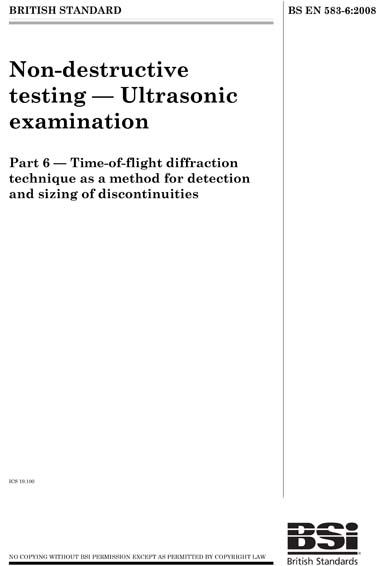Historical
BS EN 583-6:2008
Non-destructive testing. Ultrasonic examination. Time-of-flight diffraction technique as a method for detection and sizing of discontinuities (British Standard)
This European Standard defines the general principles for the application of the Time-Of-Flight Diffraction (TOFD) technique for both detection and sizing of discontinuities in low alloyed carbon steel components. It could also be used for other types of materials, provided the application of the TOFD technique is performed with necessary consideration of geometry, acoustical properties of the materials and the sensitivity of the examination. Although it is applicable, in general terms, to discontinuities in materials and applications covered by EN 583 1, it contains references to the application on welds. This approach has been chosen for reasons of clarity as to the ultrasonic probe positions and directions of scanning. Unless otherwise specified in the referencing documents, the minimum requirements of this standard are applicable. Unless explicitly stated otherwise, this standard is applicable to the following product classes as defined in EN 583 2: ? class 1, without restrictions; ? classes 2 and 3, restrictions will apply as stated in Clause 9. The inspection of products of classes 4 and 5 will require special procedures. These are addressed in Clause 9 as well. The techniques to use TOFD for weld inspection are described in CEN/TS 14751. The related acceptance criteria are given in prEN 15617.
British Standards Institution [bsi]

